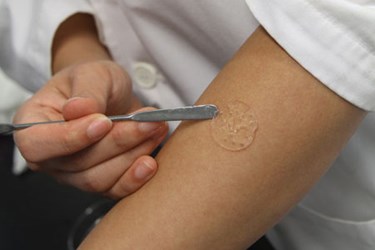Novel Nanogel Could Heal Serious Burn Wounds
By Joel Lindsey

Researchers at the Institute of Bioengineering and Nanotechnology (IBN) have created a nanogel that could significantly accelerate the healing of serious burn wounds. They hope that the substance could ultimately become the base for a variety of possible skin regeneration techniques and products.
“There is currently no commercial dressing available that can treat burn wounds rapidly,” Jackie Y. Ying, executive director of IBN, said in a press release issued recently. “Our peptide hydrogel targets second to third degree burn wounds and fills a niche neglected by existing treatment options.”
Second and third degree burns can often take a long time to heal, since such injuries leave behind only small amounts of viable cells for skin regeneration. Utilizing IBN’s previously developed “self-assembling ultrashort peptide technology,” the new nanogel was developed to overcome this difficulty and facilitate the healing process by creating a structural framework on which new skin cells may begin to grow.
In particular, researchers say that the gel is an effective regenerative agent largely because it creates a moist and porous matrix that serves as scaffolding for skin cells to grow. The gel is also non-immunogenic and non-toxic, according to the press release, making it an effective option for medical applications.
In early animal tests, the nanogel achieved almost 100 percent wound closure after two weeks of treatment, while standard silicone dressings healed around 63 percent of the injured area in the same timeframe.
Results from these tests have been published recently in the journal Biomaterials.
Researchers involved with the project are exploring possible applications of the newly created substance. So far, they believe the gel could be used as a membrane patch, topical gel, or spray that could be applied to burn wounds. The gel could also be manufactured as a dry powder that could then be activated with water, making it ideal for first aid kits.
“Ultimately, we hope to develop a gel that can incorporate bioactive agents to further enhance skin regeneration,” said Charlotte Hauser, IBN team leader and principal research scientist responsible for the 2009 discovery of the ultrashort peptides used in the nanogel. “Our peptides could also be used to develop synthetic skin substitutes for deeper burns.”
Image Credit: Institute of Bioengineering and Nanotechnology
